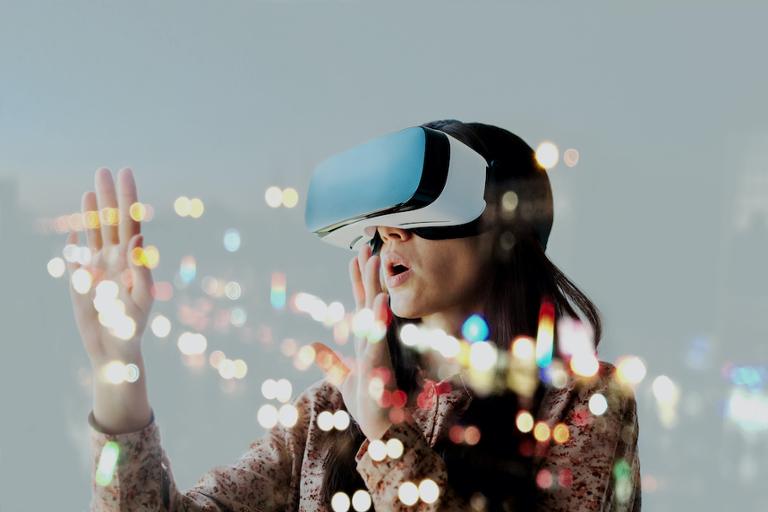With millions of people forced to work remotely due to the COVID-19 pandemic, the very nature of how companies do business is changing rapidly—the only question is whether these changes are permanent, or if we’ll all revert back to office life once the threat of the virus subsides.
However long it takes for things to get back to normal (or normal-ish), companies are trying to figure out the best collaboration tools. Already, employees are teaming up via video-conferencing platforms such as Zoom, and chatting on Slack, Teams, and other instant-messaging apps. But there’s another, potentially untapped way for people to work together even if they’re dozens or even hundreds of miles apart: virtual reality (VR) and augmented reality (AR).
For the past several years, VR has remained a niche industry. Although Facebook, Valve, HTC, and other firms have collectively pumped billions of dollars into developing VR headsets, developers haven’t seemed very interested in developing a robust ecosystem of VR apps. The one exception is games, which seems to be VR’s one area of market-strength; but even then, there hasn’t been a breakout game so compelling that people rush out and purchase $400 headsets in order to play it.
It wasn’t always this way. In fact, there was a time when pundits breezily predicted that VR would go mainstream sooner rather than later. In 2014, for example, Bloomberg released a proof-of-concept VR app that showed how finance workers could use a virtual space to absorb and work with incredible amounts of information. In 2016, VR was all the rage at the Mobile World Congress, and Google launched Daydream VR, which was going to bring VR to the masses.
Around the same time, tech firms also began to experiment with augmented reality (AR), which superimposes virtual imagery on the user’s real-world environment. In the summer of 2016, the AR game “Pokemon Go” was a huge hit. Soon after, Apple CEO Tim Cook started talking up AR in a big way, claiming that it would eventually explode into a huge, multi-sector business.
What happened? In the case of VR, companies struggled to convince people to pay hundreds of dollars for hardware. Developers took a look at those paltry headset sales and declined to devote the resources necessary to build cool software. A vicious cycle was unleashed; Google eventually shuttered its VR dreams, and Facebook CEO Mark Zuckerberg is no longer aggressively promoting Oculus like he used to.
In terms of AR, no game or app has managed to achieve “Pokemon” levels of success, despite some notable attempts that leveraged recognizable IP (for instance, an AR “Walking Dead” game where you could fight virtual zombies on your front lawn). Companies such as IKEA have released interesting AR apps, but nothing that’s compelled tens of millions of people to download and use them on a regular basis.
COVID-19 and the Future of VR and AR
Will self-imposed isolation due to the threat of COVID-19 change the fortunes of VR and AR? It’s easy to see the current crisis as the necessary spark for new technologies that allow people to collaborate more deeply. For example, Microsoft had already positioned its AR-based HoloLens as a way for everyone from surgeons to industrial workers to collaborate over long distances. And Facebook’s Oculus is already set up for people to meet and chat in a virtual space; it just needs customers to actually take it up on the offer.
But as with everything VR and AR up to this point. It also comes down to cost. There’s a high likelihood that many companies will tighten their budgets if things drag on; spending lots of money on AR or VR headsets simply won’t work for many firms, not when a laptop and a phone loaded with video-conferencing apps will ultimately lead to the same productivity outcomes. Firms that rely on hands-on collaboration (such the aforementioned medical or industrial processes) could have a better use for AR and VR, but that’s a use-case nearly as specialized as gaming.
If VR and AR are to go mainstream, it might all hinge on making headsets cheaper, with better hardware, and finally producing killer apps that massive numbers of people want to use. The COVID-19 crisis probably won’t affect the fortunes of AR and VR in the short term, but inexpensive headsets and better software could change the game if remote-work becomes the long-term normal.
For more COVID-19 content, check out the COVID-19 Jobs Resource Center.


